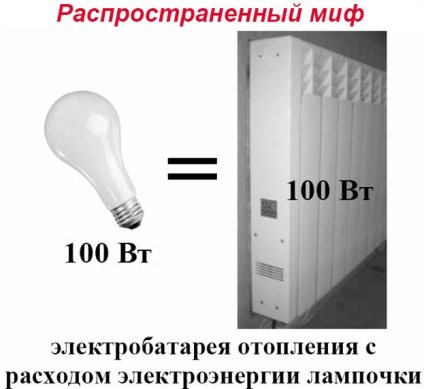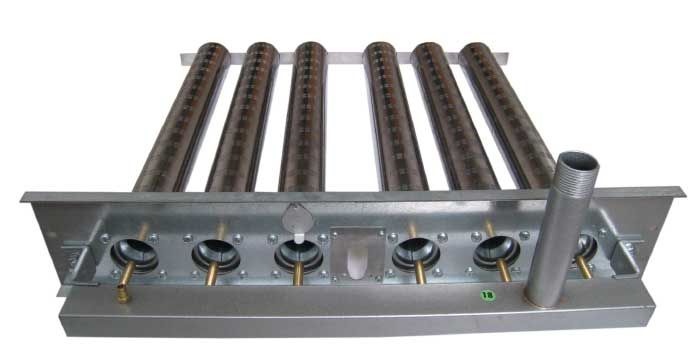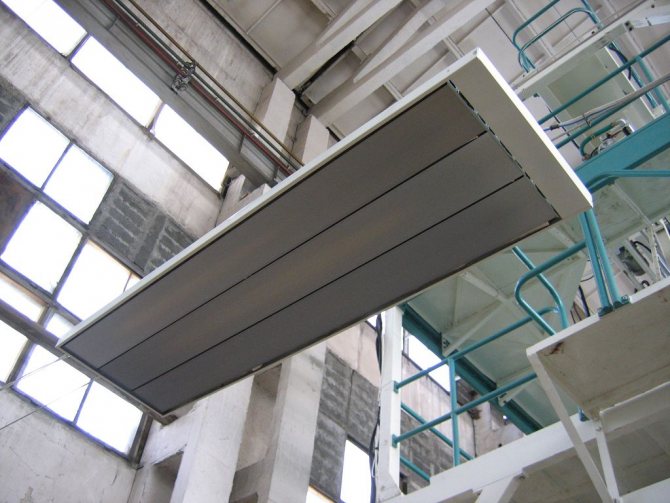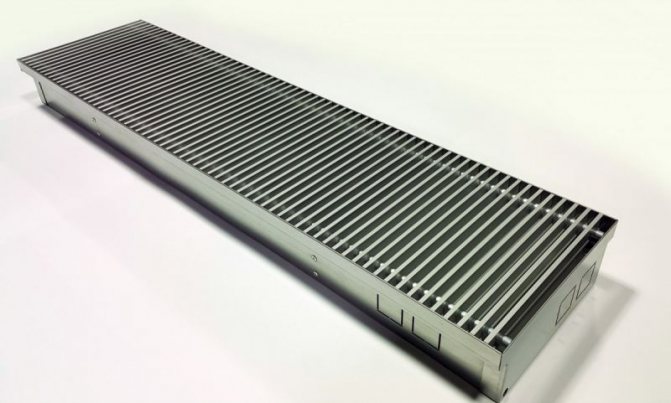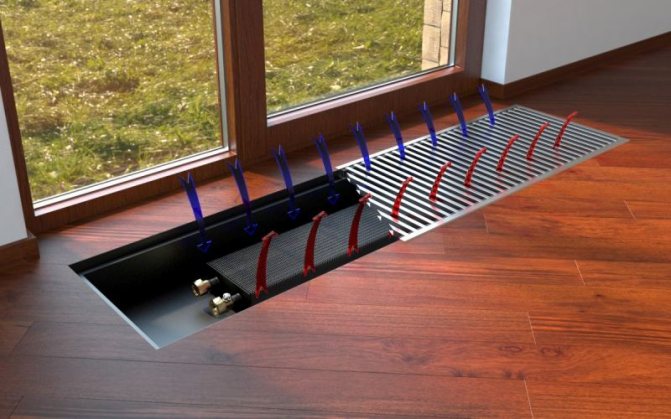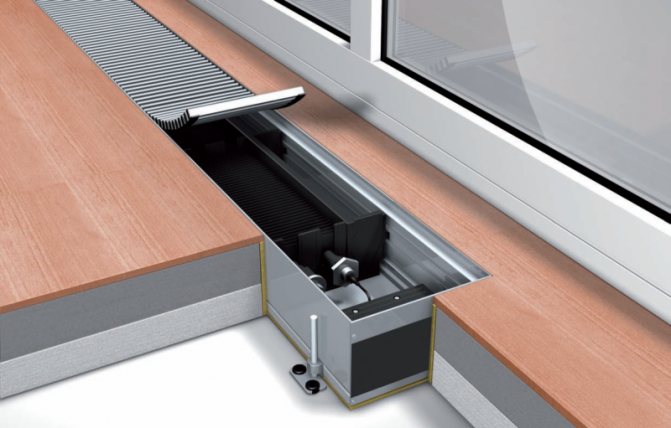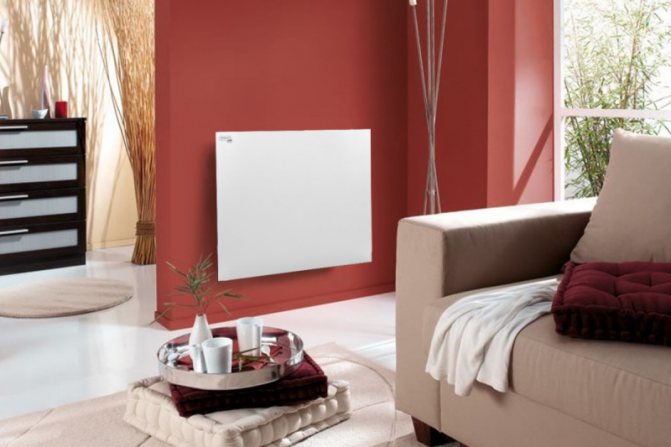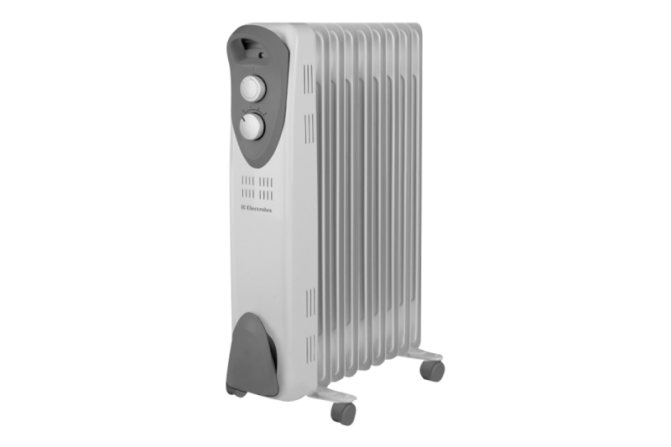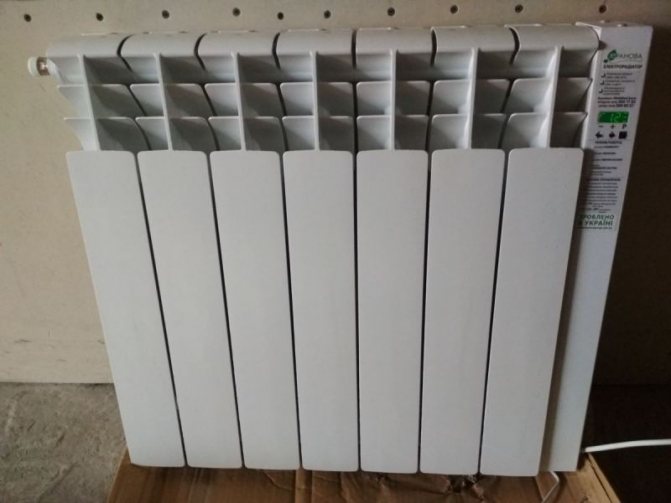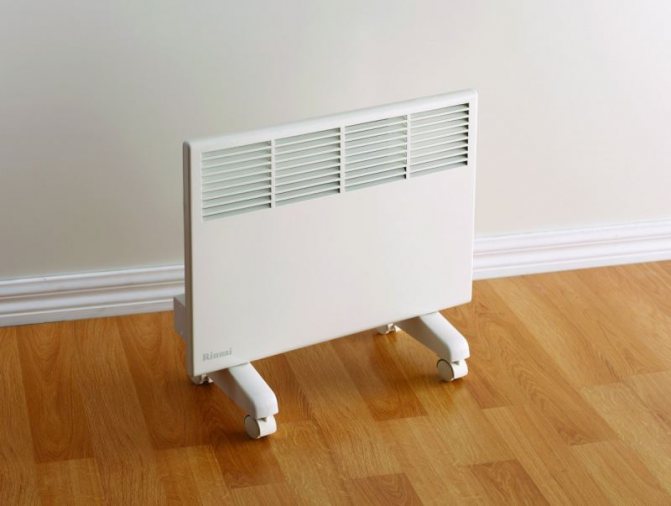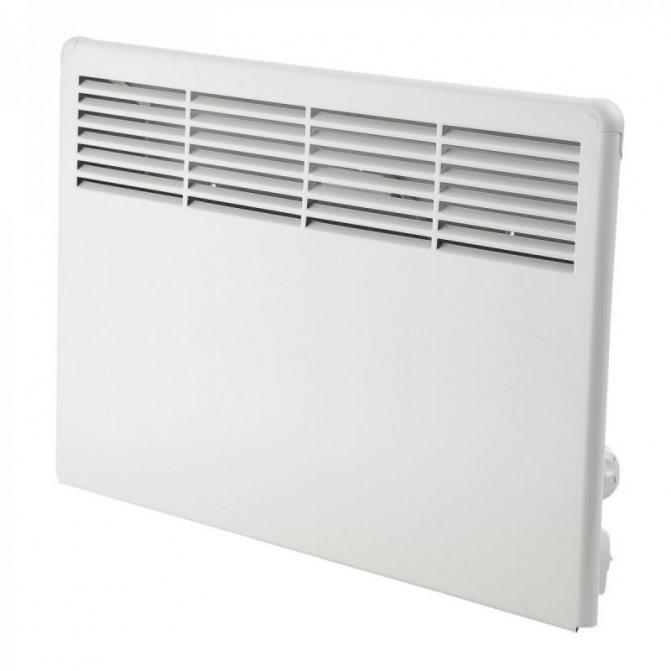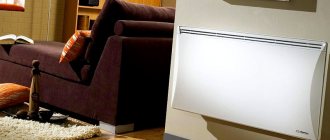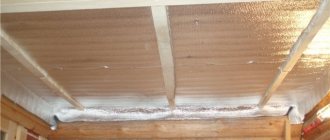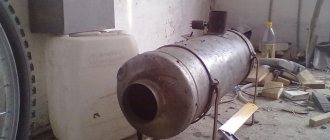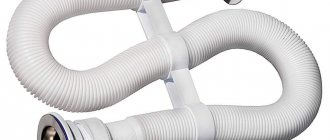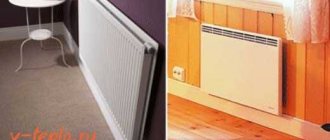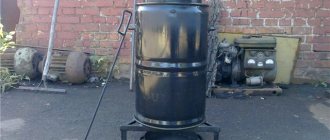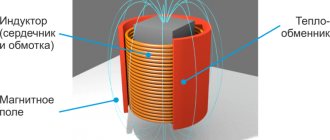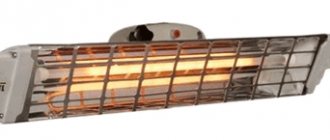Convection wall heating appliances
The operation of these electric heaters is based on the convection principle. Inside the battery there is a heating element that heats the air in the room. Since hot air currents are lighter than cold ones, they rush up, where they cool down and go down.
In the case of an electric wall-mounted battery, there are slots of the same size in the upper and lower parts. Through the first of them, the air rises, and due to the second, it is sucked into the heating device. Natural circulation ensures intensive movement of air masses.
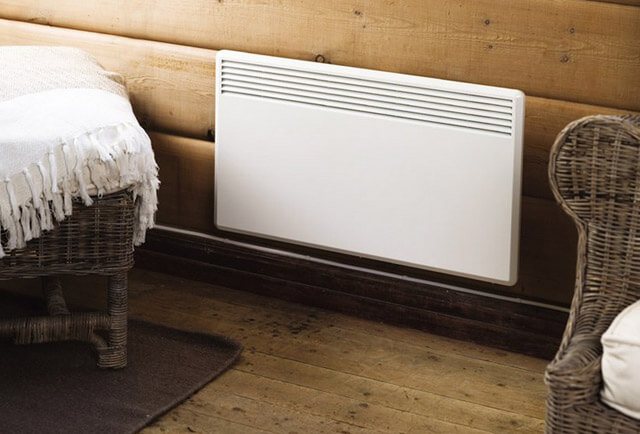
Wall-mounted convectors are installed under the windowsill at a distance of several centimeters from the floor surface in order to cut off the cold that comes from the window. In addition, this installation method allows you to save space in the room.
The look of modern convector heaters allows them to easily fit into the interior.
But these are not all the advantages of these wall mounted radiators:
- With the help of heating elements, the air heats up very quickly.
- Affordable cost.
- You can install the device with your own hands without the involvement of professionals.
- High efficiency at the level of 98%.
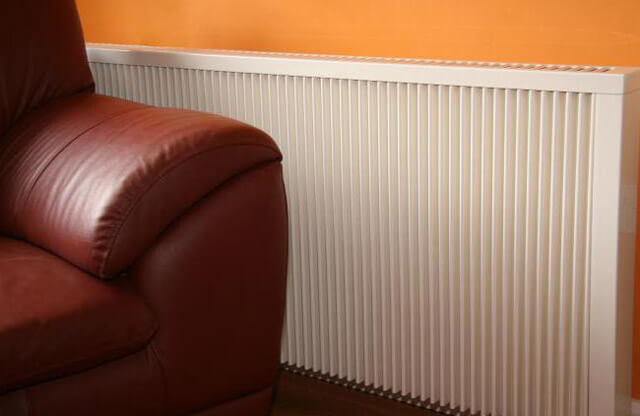

Among the disadvantages:
- After a while, the heating element begins to work less efficiently.
- Heating elements often fail.
- When using them, electricity consumption increases significantly.
- In rooms with a ceiling height of more than 3 meters, it is impractical to use convection radiators, since the degree of heating is ineffective.
As practice shows, wall-mounted electric batteries for a home have proven themselves well as additional sources of heat. If they are used as the main heating system, then for every 2 "squares" of the area, it is necessary to provide 90 W of the power of the devices.
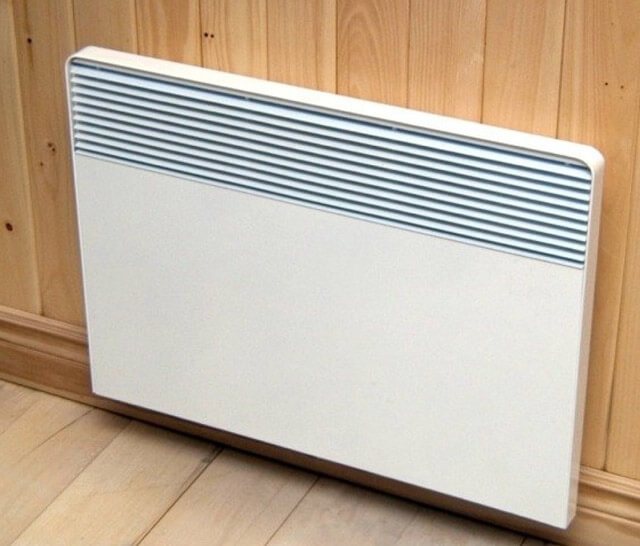

The thermostat option is also important. Convector models with a mechanical device will cost less, but those with an electronic one function much more accurately.
For rooms with a high degree of humidity, you need to use models of wall-mounted electric heating batteries that have a water protection function. When choosing electric heating radiators, it is advisable to give preference to units with an automatic overheating protection system.
The use of aluminum in the production of radiators
Aluminum is a material characterized by light weight, good fusibility and heat transfer. It is easy and pleasant to work with him. In the production of aluminum heating appliances, two different technologies are used - casting and extrusion. The first is more expensive, but the products made by this method are better and more durable. The extrusion method uses adhesives instead of welding. Due to this, the cost of structures is significantly reduced, but technical qualities suffer. To improve the performance, aluminum is also mixed with special additives during the production process.
Aluminum has poor corrosion resistance. Therefore, in the production of radiators, the metal surface is covered with a polymer layer. It protects the product from the negative effects of water for a long time. At the same time, aluminum reacts sensitively to the composition of the coolant. Some manufacturers have learned to avoid this disadvantage by using expensive supplements. Hence, we can conclude that a high-quality aluminum radiator cannot be too low cost.
Infrared wall batteries for a private house
The principle of operation of IR heaters is based on heating solid objects in the room, and not air, they come in three modifications:
- low temperature;
- high temperature;
- film.
Low temperature infrared heaters are in the form of a panel that can heat up to 85 degrees. In them, the heating coil can be located inside the glass or be protected by ceramics.
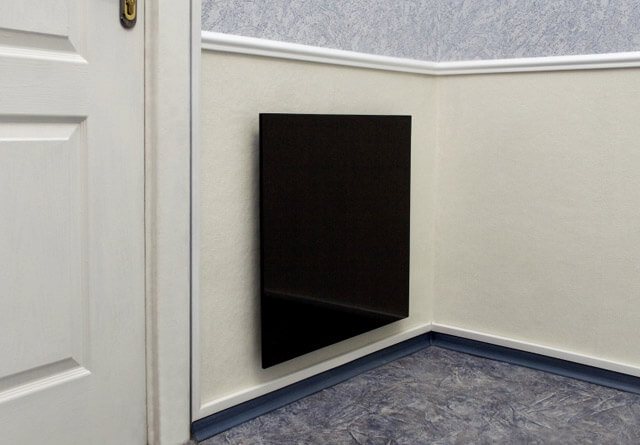

High-temperature installations are equipped with a heating element, which is placed in a tube made of heat-resistant glass. They are also equipped with a reflector that directs heat in a certain direction. These IR devices consume a lot of electricity.
Film heaters are usually used when arranging a warm floor system. Recently, consumers have been offered various options for decorative heating IR panels that look like paintings.
The use of a wall-mounted heating option has its own peculiarities. The reason is that an IR heater placed on the wall will heat only those objects that fall into the zone of exposure to radiation. Therefore, for the organization of full-fledged heating, such devices must be correctly placed.
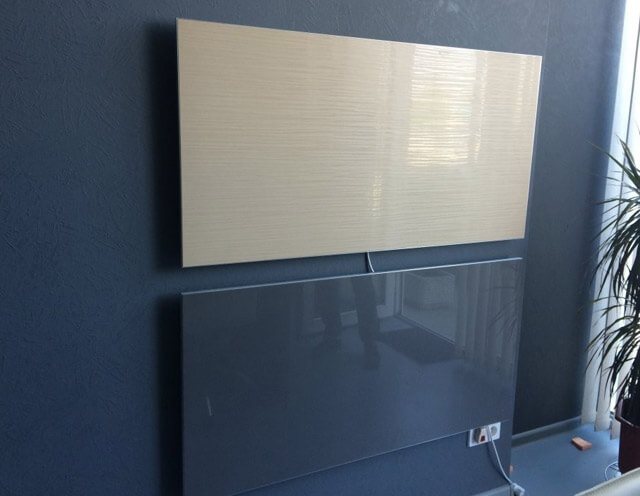

It should be borne in mind that during the operation of this type of heating, direct heating of the surrounding objects occurs. The fact is that materials such as plastic and expensive wood do not tolerate such exposure well, as a result of which they can lose their original appearance.
It is also necessary to remember that when leaving the infrared heating zone, a person will feel cold, which means that he will become uncomfortable in the room. For this reason, this heating method cannot be called the best solution for organizing the main heat supply option.
Energy saving principle
All electric heaters are energy saving, their efficiency is 98-99%. This means that when using 98-99 W of heat, 100 W of electrical energy is consumed.
If we take for comparison 1 kg of dry firewood released during the combustion of 4.8 kW of heat, 3.6 kW is consumed for heating the room, respectively, the efficiency of the unit is 75%. An electric heater with a consumption of 4.8 kW gives 4.75 kW.
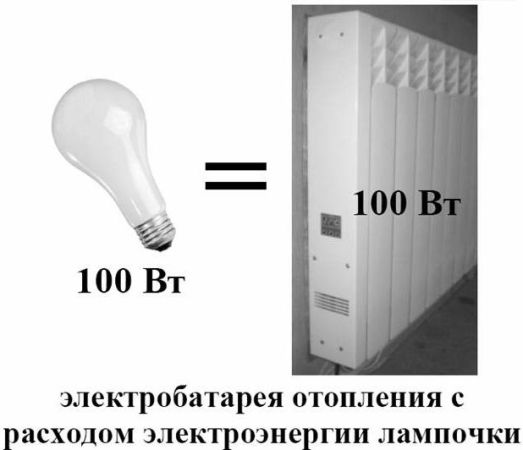

Oil heaters
Heaters of this type are reliable, efficient and durable. Almost all models of oil appliances are equipped with thermostats designed to control the degree of heating of the air, thereby saving energy.
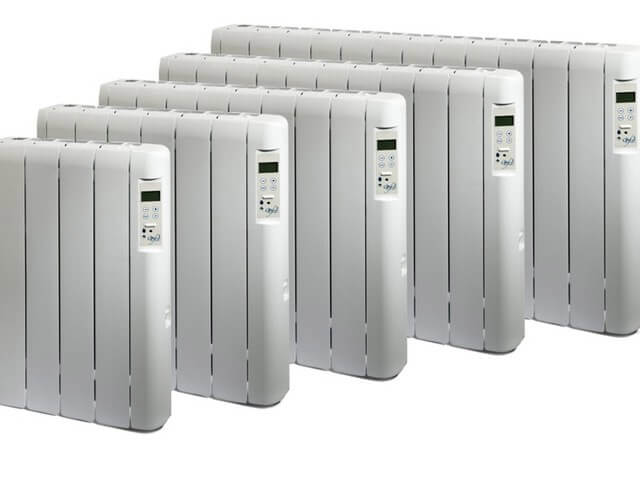

Outwardly, these heaters are similar to water heating batteries, in which thin sections are connected by pipes from above and below. Thus, they form a closed loop with an electric heating element inside. It heats industrial oil with a high boiling point.
The body of oil heaters is made of durable metals. The device works silently and does not burn oxygen in the room. As a result of the practical operational advantages of oil radiators, consumers are often tempted to purchase their wall-mounted models but are not available.
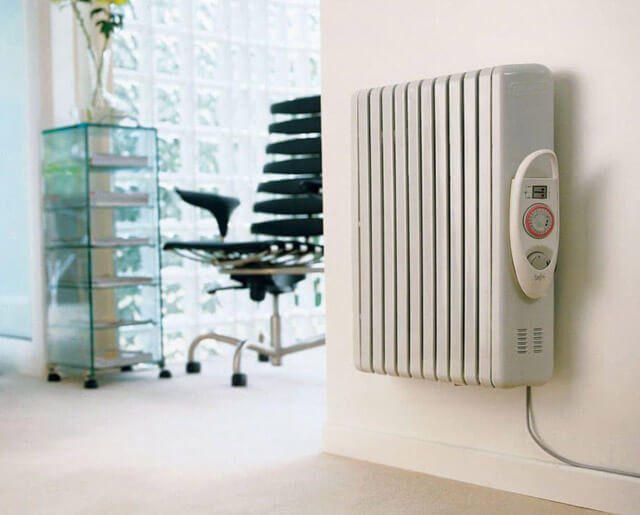

There are two reasons for this:
- Such devices have a lot of weight and it is difficult to find such strong mounts.
- If an oil battery is placed on a wall, it will lose about half of the heat it generates, as it radiates it in both directions.
Practice has shown that of all the options for an electric battery on the wall, convector models, the work of which is associated with natural circulation, have recommended themselves best.
Technical specifications
Battery performance varies between 0.5-3 kW. This indicates the possibility of full heating of a room of 5-30 m2.
Functional features:
- power level control (2-step or 3-step);
- ventilating device to accelerate space heating;
- a thermal sensor for maintaining a given temperature regime (from +5 to +35 degrees);
- timer for programming the device at a convenient time;
- decorative panel to increase traction (vertical channels create a convection effect without the use of fans, this improves traction and ensures quiet operation).
- removable frame support for linen.
- humidifier;
- ionizing device;
- heated towel rail.
Moisture protection level:
- unprotected version - IP20;
- drop protection - IP21;
- splash-proof - IP24.
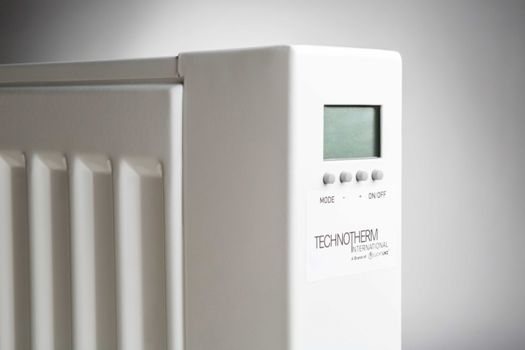

Lithium Bromide Heater
The device consists of vacuum sections filled with a lithium bromide compound. When heated, the liquid is converted into steam, which heats up the entire appliance. For heating, 0.5 liters of liquid composition is enough, which affects the reduction in energy consumption.
Wall-mounted appliances are used for permanent installation or integrated into a common heating system. The absence of pressure in the system ensures the safety of heating. The independent arrangement of the upper vacuum from liquid and air media ensures long-term operation. Lithium bromine prevents the formation of oxides on the metal.
Products are equipped with a protective system against "airing" and a thermal sensor. The temperature range includes a range of 20 - 75 g. Remote control is possible. Heating of the coolant (water or antifreeze) is carried out in an electric boiler. The batteries are used in the beam and gravity system. The cost of products varies from 800 rubles. for 1 section.
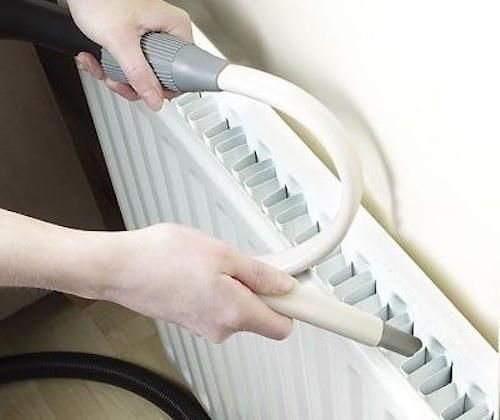

Device parameters
- Size - 500-700 mm high, 600 mm wide (narrow structures are 300 mm wide). The depth of the devices is 150 - 260 mm, but the ultra-thin devices are 100 mm thick.
- Number of sections - their number (5-12) directly affects the power of the device.
- Weight - from 4 to 30 kg.
- Configuration - oil radiators are produced in a flat (compact) form and sectional.
The cost of the devices varies in the range of 500 - 6000 rubles.
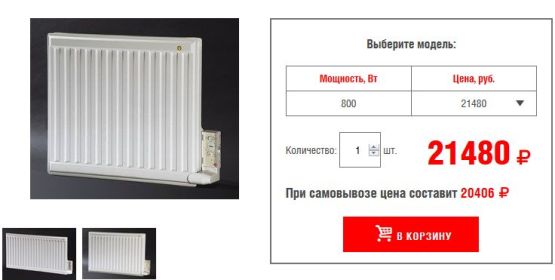

Fans - plastic or metal
Axial ventilation systems are equipped with conventional blades and are designed for small appliances.
Tangential ventilation devices have an oblong conical shape. The cone accommodates 20-30 parallel blades. The device is characterized by high performance and quiet operation. The large length of the cone determines the possibility of its placement only in stationary heater-columns. The power of the devices is 1.8 - 2.5 kW. They are available with a built-in rotary device.
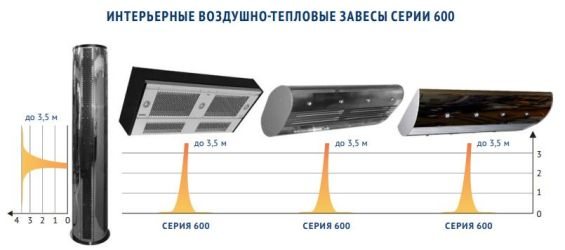

Fan heater control
There are models with a built-in remote control or a wired one. The first type includes small-sized devices placed above doors or windows. The wired remote control is completed with industrial or semi-industrial products. Together with the remote control, it is possible to install a temperature sensor that blocks the operation of the curtain when the set temperature is reached.
Fan heater prices
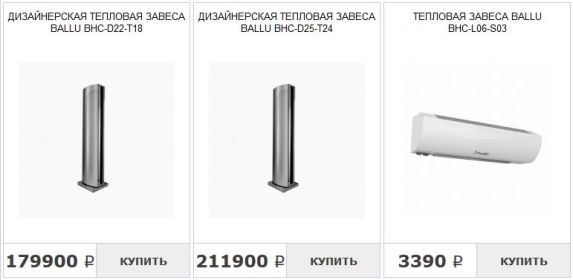

What is the truth and where is the fiction
In no case can it be said that the effectiveness of electric batteries is sheer fiction, and they themselves are worthless. A non-liquid device for 10 sections with a total power of 2 kW is really able to heat a room with an area of 25 m2, as the manufacturer claims. The point is different: these not too original products are presented to us as heaters designed to revolutionize the field of heating technology. In fact, there is nothing revolutionary about them, these are not miraculous devices with a power consumption 3 times lower than usual.
Aluminum batteries with built-in heating elements are a cross between convectors and infrared heaters.
It is true that accurate temperature control helps save energy. Only this saving is insignificant in comparison with the heat losses of the building, which any heater must compensate. In addition, almost all models of convectors and oil coolers, excluding the cheapest ones, are equipped with such control. It is also true that a large surface area contributes to good heat transfer, but there is no savings in this. The same applies to the uniform heating of the sections, in general it is good, but the electricity consumption does not reduce in any way.
The property of an electric battery to cool down for a long time was invented by marketing specialists. Aluminum alloy has high thermal conductivity and cools down instantly if you stop heating. Liquid mini-boilers in this respect are more true. But there is too little liquid in them to keep warm for a long time.
